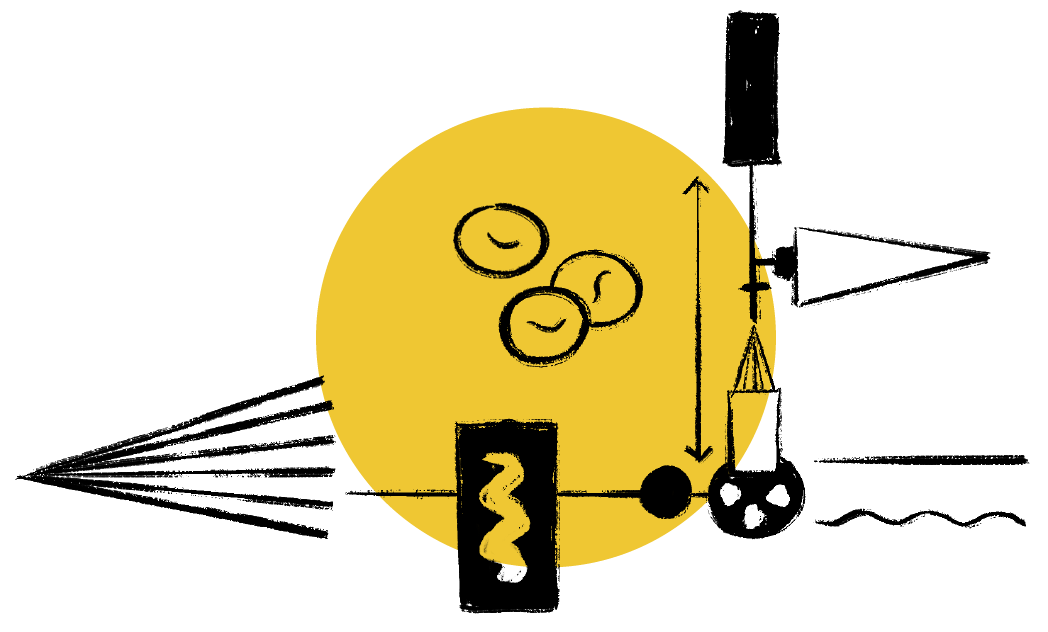Excedr’s leasing program is designed for labs. Request a lease estimate today and see how leasing can save you time and money.

Hematology is the branch of medicine that studies diseases related to blood.

By analyzing a patient’s blood, physicians can reach a general understanding of their health. Hematology also employs more specific testing to screen for and monitor diseases including leukemia, lymphoma, multiple myeloma, as well as types of bleeding disorders such as blood clotting.
Such diseases or disorders can affect any of several components of blood, from blood cells, vessels, and proteins to bone marrow, so measuring these can help diagnose and subsequently treat patients.
Blood count plays a huge role in hematology, which is why hematology analyzers, a type of automated analyzer used specifically to perform complete blood counts, are incredibly important and widely used in medical and clinical laboratories to improve patient care and the healthcare system’s ability to diagnose and treat patients.
A complete blood count (CBC) includes both red blood cells (RBC) and white blood cells (WBC), and can extend to include hemoglobin, platelet counts, and hematocrit levels.
Testing is accomplished at high-throughput rates with precise accuracy using different measurement techniques such as Coulter’s principle, flow cytometry, electrical impedance, and spectrophotometry.
Hematology analyzers, or CBC machines, are designed to perform both small- and large-scale diagnostic testing, integrate with other systems, and provide complete and efficient cell counts.

Every hematology analyzer performs a CBC and a 3- or 5-part differential. However, the type of differential depends on the model. Despite the differences in the differential, these analyzers offer automation, high quality results, quality control, and improved point-of-care.
Using Coulter’s principle to perform a complete blood count, a 3-part differential hematology analyzer is capable of differentiating between three specific categories of WBCs, or leukocytes.
This includes neutrophils, a type of granulocyte commonly found in all white blood cells, as well as monocytes and lymphocytes, both subtypes of leukocytes. Coulter’s principle requires a sample to be dissolved into an electrolyte solution that is placed inside a container that holds an even smaller container within.
Two pumps are run from the smaller container, one creating a vacuum and the other replacing the solution as it is removed. The vacuum pulls the electrolyte solution containing the WBCs through a small opening in the smaller container.
To measure how many cells pass through, two electrodes are employed. One is placed inside the solution, but outside of the smaller container, and the other is placed within the smaller container.
As the cell passes through the smaller container, an electrical resistance occurs, which is recorded and sent to a computer system which creates a histogram, which approximates the numerical data collected through the complete blood count.
This type of cell counter combines Coulter’s principle with flow cytometry, a method of measurement used to understand the characteristics of cells. A 5-part differential cell counter can provide more information on a blood cell using this combination of techniques, providing data on the internal characteristics of a WBC.
Using a laser to scatter light off of a blood cell and measure the scattering at different angles as well as the level of absorption, a cell can be identified. 5-part differential counting includes more types of WBC’s than 3-part differential, however, most tasks in the medical field can be performed using a 3-part differential cell counter.
It is important to consider several other factors when acquiring a hematology analyzer. Some of those factors include:

Our lease agreements are founder-friendly and flexible, helping you preserve working capital, strengthen the cash flow of your business, and keep business credit lines open for expansions, staffing, and other crucial operational expenses and business development opportunities.
Leases range from 2 to 5 years. Length will depend on several factors, including how long you want to use the equipment, equipment type, and your company’s financial position. These are standard factors leasing companies consider and help us tailor a lease agreement to fit your needs.
We don’t carry an inventory. This means you’re not limited to a specific set of manufacturers. Instead, you can pick the equipment that aligns with your business goals and preferences. We’ll work with the manufacturer of your choice to get the equipment in your facility as quickly as possible.
Bundle preventive maintenance and repair coverage with your lease agreement. You can spread those payments over time. Easily maintain your equipment, minimize the chances something will break down, repair instrumentation quickly, and simplify your payment processes.
At the end of your lease, you have multiple options. You can either renew the lease at a significantly lower price, purchase the machine outright based on the fair market value of the original pricing, or call it a day and we’ll come the pick up the equipment for you free of charge.
Our leases do not include loan-like terms, which can be restrictive or harmful in certain situations. We do not require debt covenants, IP pledges, collateral, or equity participation. Our goal is to maximize your flexibility. When you lease with us, you’re collaborating with a true business partner.
Our underwriting is done in-house. You can expect quicker turnaround, allowing you respond to your equipment needs as they arise. We require less documentation than traditional lenders and financiers and can get the equipment you need in operation more quickly.












































